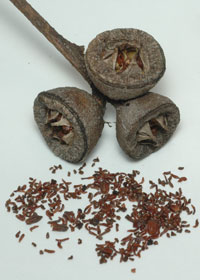The National Seed Bank
Research & Conservation projects
ACT Grasslands | Survive & Thrive | Muehlenbeckia tuggeranong | Tropical Mountain Plants | Digital Images of Seed
ACT Grasslands Project (2024–2026)
The ACT Grasslands project aims to increase our understanding of plant species in Natural Temperate Grasslands of the ACT and Southern Tablelands, and improve the accessibility of these species for restoration use. The project was developed in collaboration with the ACT Office of Nature Conservation. This project involves targets for both seed collection and banking, as well as research of seed viability and germination.
Project targets include:
- Improving the genetic diversity of target species represented in ex situ collections.
- Storing seeds long-term under optimal conditions for extended longevity and future use.
- Conducting quality assessment of collections (utilising methods such as cut-test, X-ray analysis, tetrazolium chloride test and germination trials).
- Diagnosing seed dormancy where present.
- Determining optimal germination conditions and reliable germination protocols for up to 15 key species.
- Assigning collection management decisions to each collection (as per Hoyle et al., 2023.)
- Sharing of research outcomes to inform restoration and revegetation efforts.
Survive and Thrive (2021–2025)
During the summer of 2019/20, after years of drought and months of high temperatures, bushfires impacted extensive areas of southeastern Australia. Here in the ACT, Canberrans watched on in horror as 80% of Namadgi National Park burnt over 40 days, impacting alpine, sub‑alpine and montane bushland.
The subalpine is an important, species rich transition zone between montane regions below and alpine above. It features low-growing woodlands with a diverse understory of shrubs, grasses and herbs that are adapted to cool, wet conditions. These slow-growing systems are vulnerable to changes in climate, including increased fire frequency and severity.
In 2022 the Survive and Thrive project identified 12 fire-affected subalpine species requiring urgent ex situ conservation action. The National Seed Bank and the ANBG then worked closely together to collect, study and ultimately secure these species.
Project outcomes included:
- Over 220,000 seeds collected from Namadgi National Park.
- Seeds of all 12 target species safely secured in the National Seed Bank.
- Germination protocols developed for five species, while more research is needed to uncover optimal treatments and temperatures for the remaining seven species.
- Viola improcera listed as Endangered under the Environment Protection and Biodiversity Conservation Act (1999), affording it legal protection
Research findings have been presented at national and international seed science conferences and are being written up for publication. Knowledge generated in the project will be used to support conservation actions in situ, helping build a more resilient future for subalpine flora.
Muehlenbeckia tuggeranong (current)
In the wild, Muehlenbeckia tuggeranong (Polygonaceae), commonly known as Tuggeranong Lignum, is restricted to a single population and wild plants have never been known to recruit naturally. The species is listed as Endangered both in the ACT and nationally.
Since the discovery of M. tuggeranong in 1997, the ANBG has worked with the ACT Government to establish an ex situ collection of plants from cuttings and since 2022, plants have been producing seeds that have been passed to the NSB for investigation.
By investigating M. tuggeranong holistically, including its breeding system, seed biology, seedling survival and genetic diversity, along with insights from cultivation, the ANBG and NSB aim to identify the barriers to its survival in the wild. This knowledge will support the effective conservation of the ex situ plant collection, and inform future translocation efforts.
The case of M. tuggeranong demonstrates the valuable role that horticultural and seed science expertise amongst botanic garden staff can play in preventing extinctions of wild plant populations.
Tropical Mountain Plants (2019–2023)
The application of seed banking is now expanding to species that were previously assumed too difficult to collect, store and germinate, particularly tropical species. The tropical montane cloud forests (TMCF) of the Wet Tropics World Heritage Area of northeast Queensland contain over 70 vulnerable, endemic plant species. Modelling for 37 of these species predicted a mean habitat loss of 63 % for all species by 2085 (based on data from field surveys conducted in 2017–2019).
Led by the Australian Tropical Herbarium and funded by the Ian Potter Foundation, the Tropical Mountaintop Plant Science Project (TroMPS) was a collaboration between Botanic Gardens, plant research institutions and conservation seed banks, including the NSB.
The project collected, stored and propagated genetically diverse ex situ collections of TMCF plants and seeds, and researched the potential for these species to survive and/or adapt to predicted changes in temperature and light quality under climate change.
The TroMPS project was nominated for a 2023 Eureka Prize for Excellence in Botanical Science.
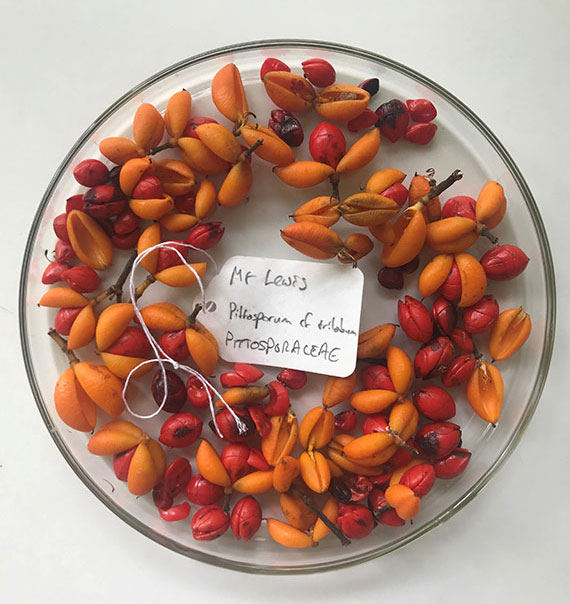 |
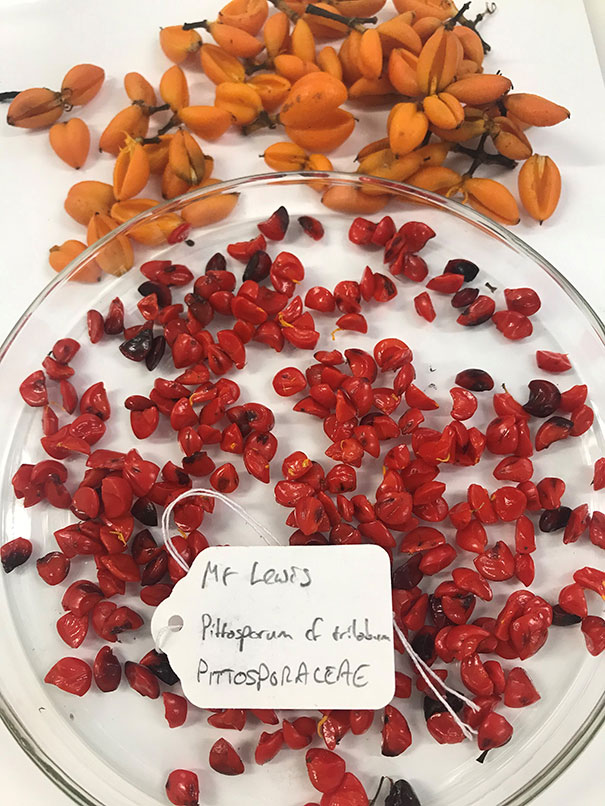 |
Fleshy fruits and seeds of Pittosporum trilobum (Pittosporaceae) collected in the Wet Tropics World Heritage Area of northeast Queensland. |
|
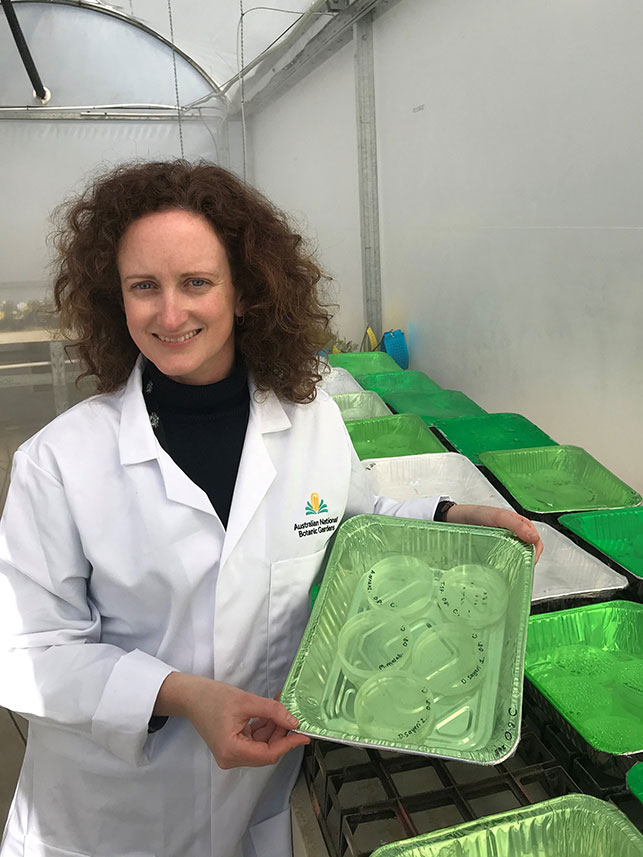 |
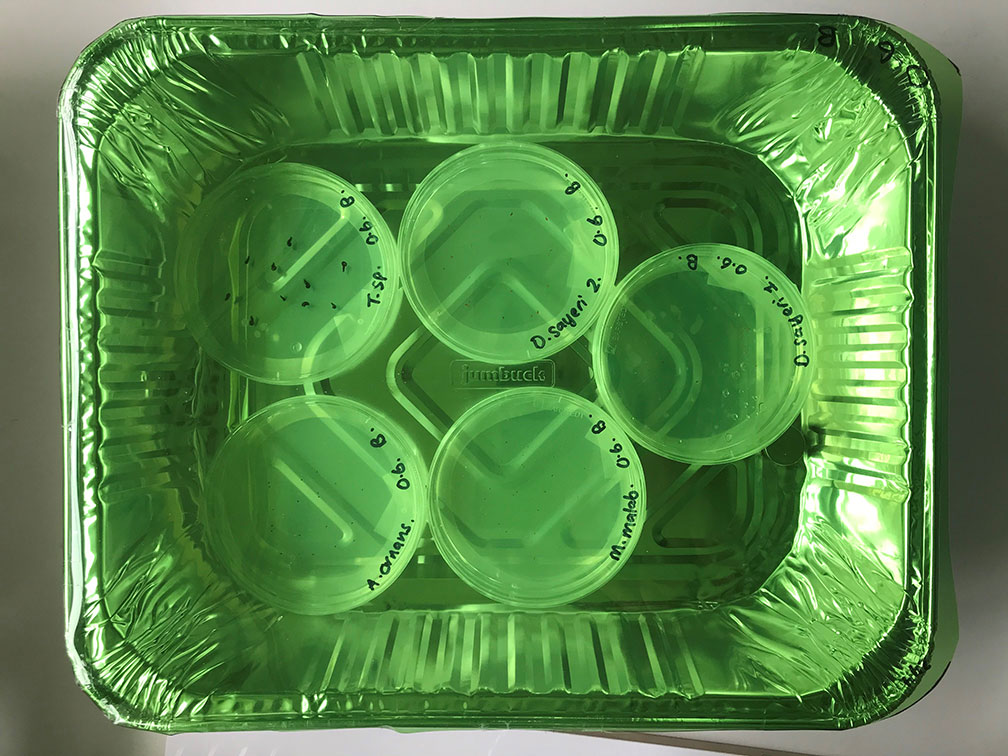 |
Investigating the effect of light quality (the ratio of red to far-red light, as determined by canopy cover and cloud immersion) on germination of seeds from tropical mountain cloud forests. |
|
Digital Images of Seed
Australian native seeds: a digital image library was initiated with funding from the Bush Blitz species discovery program, which provided support to capture images of seeds from 1000 Australian native plant species. Photographing seed accessions at the National Seed Bank is now an ongoing activity, along with collecting associated seed trait data to better understand our native seeds.
Images of the initial 1000 species and an increasing number of other seed images are available from the Australian Plant Image Index (APII) under a Creative Commons licence (CC-BY) with attribution to the National Seed Bank and acknowledging support from Bush Blitz.
The trait data obtained through this work has formed part of the new AusTraits database.
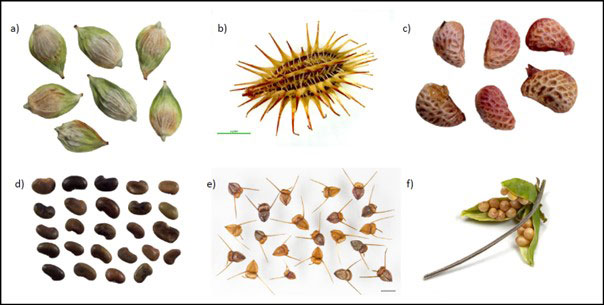
![Director of National Parks [logo]](../../../images/dnp_90px.gif)





